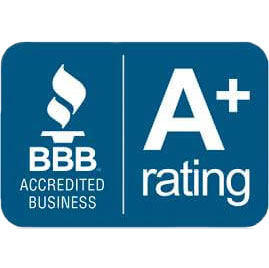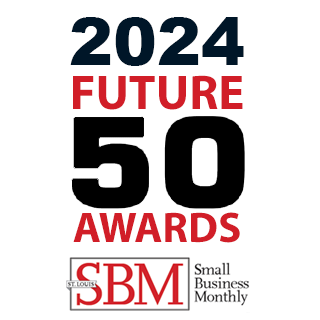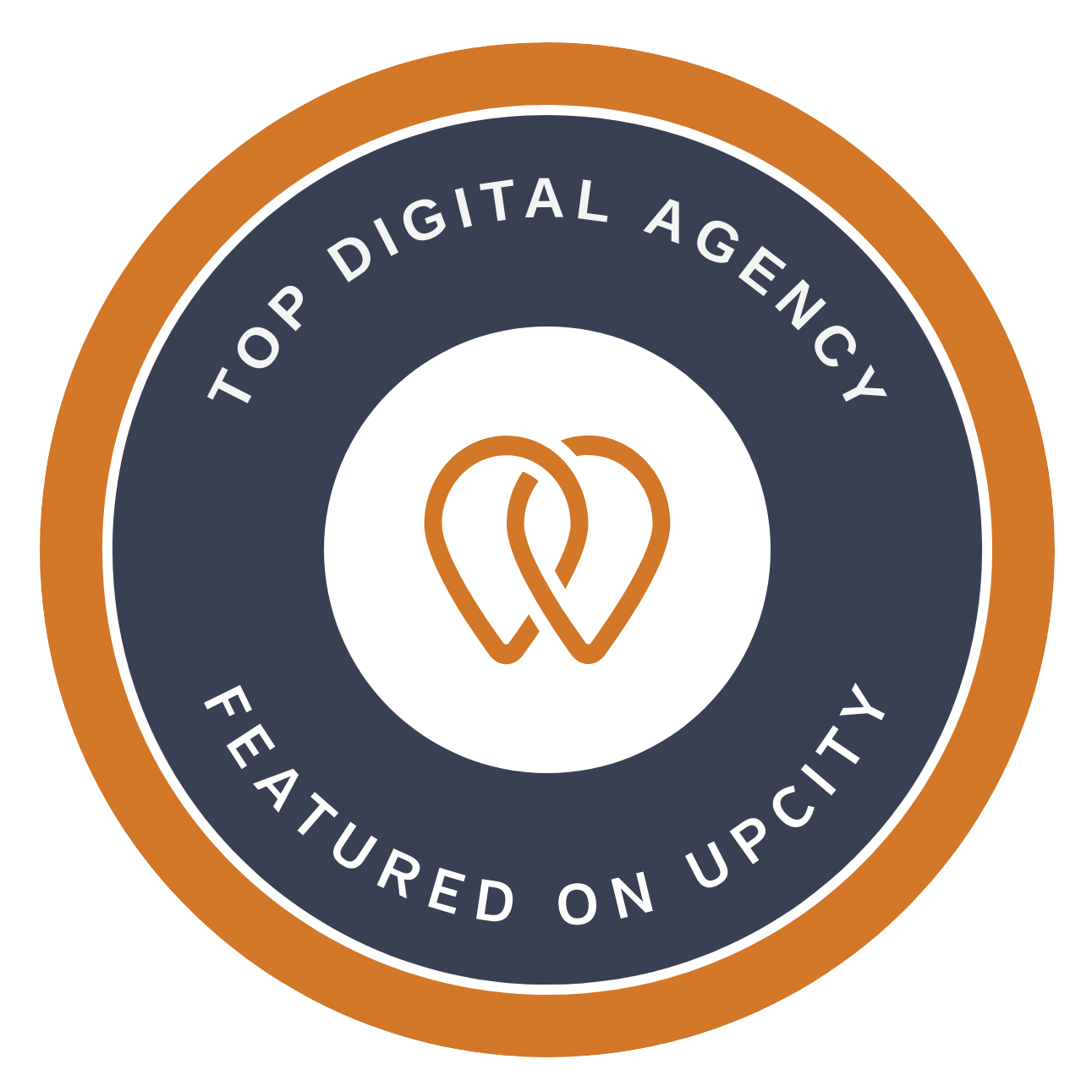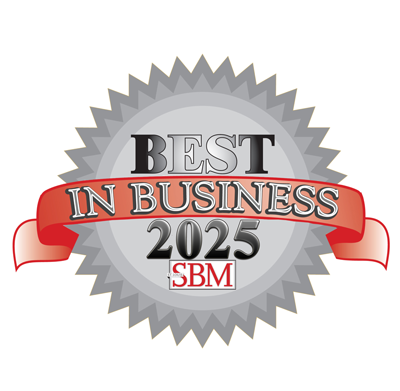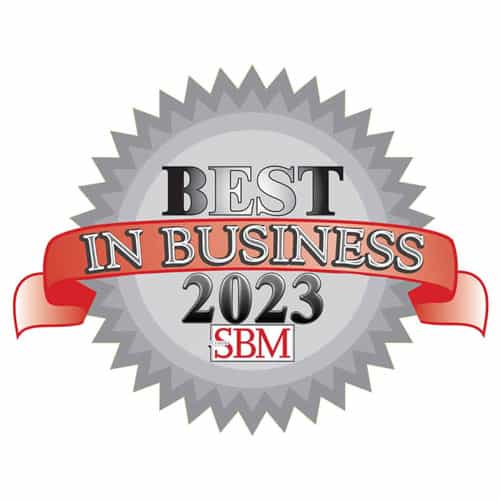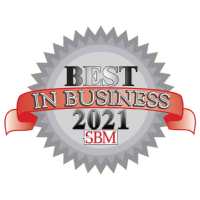In the dynamic world of marketing, standing out requires more than just following trends. It demands a commitment to timeless principles and a focus on genuine results. Today, we're proud to announce that this approach has earned Seafoam recognition as one of the "Best Marketing Agencies" in St. Louis by Small Business Monthly.
This accolade isn't just an acknowledgment of our past work—it's a testament to our ongoing commitment to building marketing frameworks that drive sustainable results and long-term success for our clients. In an industry often swayed by fleeting tactics, we've remained steadfast in our philosophy of uniting brand, reach, and relationships to create enduring growth.
What does this recognition signify for Seafoam? It's validation that our approach of blending time-honored marketing principles with innovative strategies resonates not just with our clients, but with the broader business community. It reinforces our belief that by focusing on simplicity, clarity, and genuine connections, we can help businesses navigate the complex landscape of modern marketing.
To our clients: this honor is as much yours as it is ours. Your trust in our vision, your willingness to engage in deep strategic thinking, and your partnership in creating positive change—these are the true markers of our success. This award reflects the growth and impact we've achieved together.
As we celebrate this milestone, we're reminded of our core mission: to elevate businesses through the design of timeless marketing systems. This recognition from Small Business Monthly tells us we're on the right path, but we know the journey is far from over.
To our fellow honorees: congratulations on your well-deserved recognition. Together, we're showcasing St. Louis as a hub of marketing excellence, a place where businesses can find partners who truly understand how to drive growth and create lasting impact.
Looking ahead, this award isn't a finish line—it's a new starting point. We're more committed than ever to pushing the boundaries of what's possible in marketing, to creating strategies that not only drive business success but also strengthen our community.
To everyone who's been part of the Seafoam journey so far: thank you. Your support, trust, and collaboration have been instrumental in getting us to where we are today. Here's to the next chapter of our story—to greater achievements, broader horizons, and even more significant impact for the businesses and communities we serve.
Stay tuned for more news as we continue to build on this success. The best is yet to come!
At Seafoam, we recently had the opportunity to renew our partnership with Alter Trading, a leading scrap metal processing and recycling company with over 125 years of industry experience. With more than 80 locations across the United States, Alter Trading recognized the importance of leveraging social media to build brand awareness, foster customer loyalty, and engage with their current and potential customers. However, they faced challenges in creating a cohesive brand message across their numerous Facebook pages, with many pages lacking fans, posts, and brand consistency.
To help Alter Trading overcome these challenges, we developed a comprehensive approach to streamline their communication, maintain brand consistency, and engage with their audience effectively.
Key components of our strategy for Alter Trading's social media presence included:
- Establishing a documented process for content creation, editing, and approval, involving both their corporate and legal departments.
- Developing compelling, brand-consistent content with a local flair for each of their locations.
- Monitoring engagement to ensure proper moderation and foster friendly dialogue.
- Reorganizing, refreshing, and redesigning their existing pages to maintain consistency across the brand.
- Creating new pages as needed to expand their social media presence.
- Balancing company-wide and location-specific posts to cater to both their broader and local audiences.
- Maintaining regular communication with their corporate office and staff at over 50 locations to inform local strategies and posts.
- Collaborating on PPC efforts to increase their brand reach.
- Utilizing our graphic design skills to create in-person handouts that mirror their digital efforts.
Through this strategic partnership, Alter Trading has seen impressive results in their social media performance. They have experienced a 220% increase in brand followers, a 218% increase in organic reach, and a 200% increase in engagement rate.
"Seafoam's innovative approach to social media marketing has been instrumental in helping Alter strengthen their brand presence and connect with their customers on a deeper level," said Seafoam's Nikki Bisel. "The ability to understand Alter's unique challenges and develop a tailored strategy has been invaluable in driving their success on social media."
As Alter Trading continues to grow and enter new markets, our partnership positions them to effectively engage with their communities, build lasting relationships with customers, and maintain their reputation for quality, integrity, and responsibility in the scrap metal industry.
We are proud to have played a role in Alter Trading's social media success and look forward to continuing our partnership to help them achieve their goals and drive sustainable growth.
To learn more about Seafoam and our approach to helping businesses like Alter Trading achieve sustainable growth in social media marketing, drop us a note so we can connect.
The term backward planning is borrowed from the educational field, and it describes the best way to define objectives and develop instructional techniques. Instead of beginning with a first, second, or third lesson, educators begin with the goals of a particular course. They identify what students are expected to know, and then proceed “backward” to create lessons.
Lately, strategists have adopted this concept, applying it to marketing and other fields. The reason is simple: the method works. It allows marketers to propel their efforts forward, using the tools available to them, and reach more ambitious goals for clients. Here’s how.
Backward Planning is Key to Success as a Marketer
Just as a writer can’t wait around for inspiration to strike, a marketer can’t assume that their audience will be engaged and interested every time they post something on Facebook. Especially if that something is a clever meme posted once every couple of months.
The problem with clever ads or posts is that they’re not sustainable. You don’t catch lightning in a bottle every time. You have to have a purpose behind your marketing efforts. That’s the necessity behind backward planning.
It takes planning with the end in mind—a benchmark teams need to reach, a value proposition their target audience needs to understand—to plan a variety of content across channels. Not all of the blogs, emails, or social media posts will be brilliant, but they’ll all be leading toward something; they’ll have a purpose that potential customers can understand.
At Seafoam, We Don’t Chase Lightning, We Make the Weather
As our team develops strategy, we use a tried and true procedure. Together, we get to know our clients. We develop big goals and benchmarks. Then, we plan out how we’ll measure our progress and make adjustments going forward. Doing so gives us a solid framework to get creative while understanding the purpose behind it all.
We aren’t chasing after that next bolt of lightning; we don’t have to. We have the tools, we have a plan, and we can easily measure what’s working and what isn’t.
Giving Our Clients What They Really Need
In marketing, we take a message and we disseminate it to the public, in hopes of getting a big win for our client. But what happens when that message is muddled? What happens when what the client is asking for isn’t really what they need?
Another skill that’s vital to a good marketing team is the ability to listen, and to listen to the questions behind the questions. Sometimes a client’s frustration has to do with a key marketing concept or strategy they’re missing—certain vocabulary that must be learned. In other words, many of our clients are just familiar enough with marketing buzzwords to be dangerous.
When you work with clients, accept feedback on a project, and adjust your marketing strategy, you have to listen with all three of your ears. That is, you have to use your background knowledge, your intuition, and your communication skills to understand what they really need. Then, you have to deliver.
Communicating the Seafoam Way
One way to deliver is by giving your target audience some scaffolding. You start with something they already know and understand. You evoke an emotion they’ve felt before. Then, you use that base and build upon it to teach them something new.
So much of marketing is about educating the public, and doing so in a way that meets them where they are. You wouldn’t talk down to someone you wanted to win over (at least, you wouldn’t if you wanted your pitch to work!) and you wouldn’t lecture them to death either!
Instead, you speak clearly. You give them information they can use. You inspire. That’s the real heart of marketing.
Good Marketing Strategy Takes Both Smarts and Heart
Marketing, like education, is as much art as science. After all, you’re dealing with messy humans and their very messy feelings. You have to have a plan, and you have to have a heart, too. You need that just-right balance of hard and soft skills.
Once you open your ears and focus more on strategy and goals, you discover that truly creative marketing happens almost naturally. Lightning strikes more often. Your client trusts you a little more, and your efforts are increasingly effective.
Learn more about the Seafoam process, and how we practice these tips day in and day out. Let us know if we can help your business.
It has been about six months since the world first turned upside down. From mandatory shutdowns to supply chain disruptions, businesses had to quickly come to grips with the understanding that this new normal was absolutely not normal. Some companies had to adopt new safety protocols as they grappled with what it meant to be essential. Others had to lean into creative ideas to keep their employees working as customers hunkered down at home. As in most times of crisis, companies had to learn on the fly how to adapt to survive.
What do you do, as a business, when your customer’s needs shift overnight? Can you adapt in-person processes to an online world? How do you pivot to rise to a rapidly evolving marketplace? What do you do when what always worked before, doesn’t work now?
Hobbled by COVID-19, many of our clients are asking these very questions. Industries from healthcare to communications software have been upended by this virus, and every company is feeling it differently. One common theme among almost every industry is this: the time to identify ways to improve your digital marketing is NOW.
Rely on Data to Lead the Way
The first step in this process shouldn’t be a surprise to anyone who has ever worked with the team at Seafoam: you have to look at the data. If your customer’s behavior has changed in the past six months, the data should reflect that. So how can you tell if your past digital marketing strategy is no longer working?
There are a number of ways to determine if your digital marketing has taken a hit in recent months. Initially, the first indicator may feel a little more intuitive. Maybe the phone is not as busy, or appointments are down. Perhaps your team’s schedules are not quite as full or, after years in your industry, something just feels off. Trusting your gut is important in the world of business, but it should always be coupled with a look at the data. If you can combine these two, you may be able to get a handle on your issue and rebound far more quickly. So jump into the data!
Indicator #1: My Overall Website Traffic is Down
One of the first stops on this data train is to look into analytics to see what the traffic to your site looks like. A word of caution, however, when looking at the data you find in analytics... Looking at one data point fixed in time can sometimes offer opportunities for misinterpretation. Instead, look at the data from a couple of angles to get a full picture of what’s going on.
Questions to ask yourself if you see a dip in website traffic
- What does traffic look like compared to the previous year?
- Where is your traffic coming from? What is your most popular channel? (And what is your most profitable channel?)
- How have your channels shifted year over year?
- What were your most popular pages during the pandemic? And how does that compare to the same time period last year?
- Geographically, where is your traffic coming from? What lesson can be gleaned from this data?
- How is your bounce rate behaving? Are people navigating to the site only to quickly leave?
While this is not an exhaustive list, it should put you on the right path to understanding how COVID-19 has impacted your brand. Analytics is not the only place to look to understand how your users are behaving. In addition to understanding traffic patterns on the site, you can also look to other channels to see how your users are engaging with the brand.
Indicator #2: Social Media Is No Longer Engaging
As COVID-19 forced more and more people to be at home, social media usage climbed. It became a safe way to interact with friends and family while you were stuck in the house. Sales people took to LinkedIn when their regular contacts weren’t in the office any more. Unburdened by typical workplace restrictions, many users hung out on Facebook while working remotely. In short, social networking surged during the pandemic.
For many brands, this offered a golden opportunity to reach new customers and engage with existing customers. It provided a way for B2C brands to communicate new guidelines, restrictions, and even special offers in real time. Bored users also spent time showing support for their favorite brands on these platforms. Creating engaging content in these times became the name of the game. Some brands did an excellent job, which we will highlight below. But there were also brands that floundered during this crisis period.
Did you see a dip in engagement? Did you struggle to get users to even see your posts? During the COVID -19 pandemic, social media saw an increase in engagement for many brands. If your brand was not one of them, what happened?
Here are a few questions to ask yourself if your social media is no longer engaging
- What posts did well on social media during the COVID-19 pandemic?
- Which ones floundered?
- How well did social media platforms perform in sending users to your site?
- What types of comments or messages did your brand receive in this time period?
- How did your content shift during the pandemic?
You might notice a trend. For many brands, what worked before quit working during the pandemic, in part because the nature of the conversation changed. A deeper look at social media and the brands that did well during the crisis highlights the need to speak authentically in the moment to the moment. Another indicator of this can be found in keyword data.
Indicator #3: My Keywords Aren’t Converting Anymore
If you have invested in SEO in the past several years, you understand how important it is to find the right keywords and rank for them. This can take a lot of time and effort to get just right. The perfect keywords can bring a TON of value to the brand, funneling users from awareness to intention to conversion. Between paid ads and organic rankings, keywords allow brands to target exactly what their target audience is looking for. So what happens when that intent shifts?
One data point that can’t be overlooked is your conversion rate. If your keywords are still ranking at the top, but they are no longer converting, you have to recognize that you have a problem. This may be the clearest indicator that what once worked is no longer working. The question you have to ask yourself is this: what changed? How have your user’s needs shifted, and what do you think they are searching for now? In the COVID era, the answer to what changed might just be – everything.
If everything has changed, then your digital marketing efforts have to follow suit. From your keywords to your messaging, your brand’s strategy must evolve to meet your users' new needs. So perhaps the better question to ask is, how has COVID-19 impacted the customers within your industry? And what can you do to help?
So, What Can You Do About It?
Taking a deep dive into how your users lives have changed can be an impactful exercise into understanding how your marketing needs to shift.
- What are your users struggling with right now?
- How has their daily life changed?
- What does their work day look like?
- For that matter, how is their industry impacted by the pandemic?
It is only after you answer these questions that you can truly understand how your brand’s messaging needs to shift. And believe us when we say, it needs to shift. The conversation online has completely changed, and your brand should not try to pretend that it hasn't.
Speak to the issues that your users are facing, in an authentic manner. Show them that you understand the hardships and frustrations that they are facing. Then you can offer solutions appropriate to their needs.
Remember when we talked about all of the brands that did so well on social media during the pandemic? Let’s look at a few:
LEGO
Kids were hit pretty hard during the pandemic. All of a sudden, their whole worlds shifted in a pretty scary way. They had to learn the new rules of the world, so to speak. No play-dates (or hugs and high-fives) with their friends, no going to school, and LOTS of hand washing. The ever popular building block brand, LEGO, decided to speak to the miniature sized demographic through the voices of their ultra-popular characters created for the LEGO movie franchise. For fans, the characters offer their PSA's in a fun, lively, and completely on brand way.
Note that playing with LEGOS AND watching LEGO movies are two great ways to spend some time while quarantined, but the brand didn’t even have to mention that. By reminding users of the simple magic behind the brand, and helping parents talk to their kids about a crazy new set of rules, the LEGO brand further endeared itself with parents and kiddos alike.
Tiny Little Monster
As shut downs hit small, local businesses especially hard, many companies struggled to keep their employees working. Overnight revenue dried up. One Saint Louis-based screen printing company, Tiny Little Monster, decided to think bigger than just their business. As a B2B brand, they saw many of their customers struggling and decided to create a campaign to help. And because they were a screen printing company, they built their campaign using their core capabilities in a simple and authentic manner; and BOY did it take off!
The #hereforgood hashtag and website offered custom t-shirts for local small businesses impacted by the shutdown, providing a much needed cash flow for the participating brands. The concept was simple: buy a t-shirt and support a local business with $10 from every purchase going straight to each participating company. Their social media messaging shifted completely, with posts that focused on the campaign and on all of the businesses involved.
Beyond simply helping local businesses, Tiny Little Monster reached out to their counterparts across the country and helped them build their own #hereforgood campaigns. All told, the #hereforgood movement reached 34 states and raised hundreds of thousands of dollars for small businesses across the country.
The passion for this project showed in every post, every follow up comment, and every t-shirt Tiny Little Monster made. The conversation absolutely shifted to meet the time, but it was so much more than that. The conversation was authentic, compassionate, and inclusive; which is why so many users jumped on board. It goes to show that one really good idea, and some passionate marketing, can really make an impact.
Newtec Services
Of course, creating a powerful statement is a bit easier when you are working on something fun and approachable like t-shirts and t-ravs. (If you are not in St. Louis, you need to call us for an explanation and an invitation to dinner next time you are in town.) What do you do, however, when your brand is all about keeping businesses moving? How do you cope when the world of business comes to a screeching halt and then moves exclusively online? This is the trouble that Newtec Services, an information technology company that specializes in managed IT services and network security, faced as the pandemic raged on.
Newtec Services had invested in digital marketing for a number of years. They were ranking for their core keywords, and some really great leads were coming in the door. Then, early in 2020, the bottom seemed to drop out from under them. While their core keywords continued to rank, the traffic and the leads associated with said traffic was no longer there. A global pandemic was not the time to see traffic drop, and Newtec Services knew that they needed a new approach to tackle the issue.
Turning to social media was not the silver bullet that it proved to be for the #hereforgood campaign in our previous example. This was not a situation that allowed for a B2C type rallying cry. After all, the core demographic for this brand was not the average t-shirt wearer (which is everyone.) Instead, the target audience was medium sized business owners and IT professionals looking to expand their bandwidth. Moreover, many of these users were no longer working in the office, so traditional sales outreach instantly became a whole lot more difficult.
Newtec Services decided to follow many of the same steps we outlined above, looking at the new problems facing their users and creating solutions that would help tackle these issues. Knowing that Google was going to be a big part of the conversation, keyword research was in order. As a brand, Newtec Services needed to understand what was driving the conversation in this new era. They took to their website, creating pages that spoke to these issues in a technical yet informative way.
Working with many of their existing clients, they dug in to find a greater understanding of the problems that COVID-19 had created for their industry and worked to explain how their brand could offer solutions. As with any SEO tactic, the return on this tactic was not instantaneous, but the brand has seen an increase in their leads as these pages pick up steam.
How Does Your Conversation Need To Change?
While the world is slowly returning to some semblance of normal, the reverberations of COVID-19 are probably here to stay. So, how has your brand shifted its messages to speak to this new way of working? What are your clients saying about their struggles, and how are you rising to meet the occasion?
If you are not sure how to answer any of these questions, help is just a phone call away. At Seafoam Media, we help brands of all sizes tackle some of their biggest digital marketing challenges. We take the deep dives, looking at changes in the marketplace, to help craft a strategy that will not only prepare you for the world today but also help to propel your brand into the future. No matter what crazy things 2021 may bring, we are here to help your brand succeed. We would love to chat about your particular brand. Call us today, or schedule a (virtual) discovery session with our team.
We've got to celebrate. Because from the Great Recession to … whatever this era is, we've put our hearts and souls into creating a successful company – a digital marketing company that's risen above the noise and lasted for 10 years! We had the courage of our convictions a decade ago, and we see a bright future ahead.
As Nikki put it on our 8th anniversary: "With every year that we've been in business, we've had so much growth – not just in terms of revenue or number of employees, but in our processes, how we do things, how we take care of our clients, and the quality of our work."
Let's celebrate with a few of our milestones!
Milestones of the Past 10 Years
- Growing from one person's startup idea, to an office of 3, to an office of 12!
- Moving into our current space on Sutton Blvd.
- Evolving from a website + SEO shop to a digital marketing agency to a consultancy + agency.
- Becoming closer as a team and celebrating with some truly awesome Seafoam Days, including an Escape Room challenge and a trip to TopGolf.
- Winning several awards for our SEO skills, our quality customer service, and more from organizations such as UpCity and Small Business Monthly, among others.
- Participating in numerous Maplewood Festivals and creating truly stunning pieces for Let Them Eat Art!
- Helping over 250 companies across the globe. And we're only getting started!
What We've Learned About Seafoam Team Members
Nikki tells the most cringe-worthy "dad jokes." We threaten to call her wife when she cracks a particularly egregious one.
Oh, she also runs the place with a clear-eyed look to the future and supports each of her team members with the professional development they need and loads of encouragement.
Liz not only holds our team together, she also holds an incredible amount of industry knowledge and customer details in her head. Currently, she's sharing that knowledge with our two new marketing strategists, Matt and Holly W!
Matt started as a digital marketing analyst with Seafoam but takes on additional roles whenever he's needed. His leadership traits and sharp insights about marketing make him a real asset to our team. Holly W is a social media phenom who is as ambitious as she is charming. Watch out for her devious sense of humor.
Brian, our humblest capital-e-Expert, is also transferring his vast encyclopedia of SEO history to our digital marketing analyst, Rachel, as he spends more time perfecting our proprietary software to make processes run more smoothly for the Seafoam team. Rachel brings a wealth of talent, personality, and new ideas to our team in her role. She's already making waves!
Courtney is never idle, not even during a nationwide lockdown. She continues to bring in new clients with the same enthusiasm that she displays toward her favorite band, her favorite show, her new kitten, her upcoming wedding … everything, really.
Jade, our tireless client success manager, has just celebrated her first year with Seafoam and we can't imagine the place without her. Her energy makes us all great.
Rebecca, our brilliant web designer, does everything from the mundane to the innovative with an artistic vision that is astonishing.
Our two newest team members were brave enough to come onboard during our remote work period! Kevin brings his photography skills and social media experience to our brand ambassador role, and Brett joins Jade in making sure our clients have the best experience possible!
The writer of this piece (and most everything else), Holly S, just keeps on writing! I wouldn't go so far to say she's the backbone of Seafoam, but …
Our entire team looks forward to the next few years when we hope to add more people and multiple marketing "pods!"
Lessons to Remember as We Enter our 2nd Decade
We've learned more and more as our team and our client list have grown. We understand that there's no magic wand or secret formula when it comes to digital marketing. It's all about acting and adjusting. As Nikki has noted, "it's about good people and diligent, hard, honest work, and finding the right people for the right positions in this particular culture."
As we've moved toward our goals, one milestone at a time, we've made plenty of our own adjustments. We've also dared to imagine a bigger, brighter future for ourselves that we're determined to reach.
Ultimately, we're on track to be the most well reputed marketing consultancy and agency in St. Louis. We hope you'll come with us on the next stretch of our journey.
A month ago, in the middle of the lockdown we have been patiently enduring, the International Monetary Fund (IMF) predicted that a coming recession could be "the steepest in almost a century," approaching levels not seen since the Great Depression. Between a worldwide pandemic and skyrocketing unemployment levels, it's no wonder that business owners are worried.
Even at the best of times, the U.S. economy is fluid. Depending on the health of the national and global stock markets, your customers may either be comfortable investing in your products and services or anxious, withholding their dollars just in case financial catastrophe strikes.
Over the centuries since the founding of the United States, our nation has been affected by no fewer than 11 recessions. Although these times can be scary for consumers and businesses alike, this is a natural pattern in our nation’s economic development. That’s why it’s important to know how to leverage today’s technology to ensure your business’ longevity through the next impending stock market dip and beyond.
Digital Marketing Matters Now More than Ever
Many business owners, faced with a looming recession, are cutting costs and making difficult decisions about what to prioritize going forward. One decision likely has to do with their marketing budget.
You may be considering scaling back your marketing efforts, too.
In our opinion, cutting your team's marketing efforts in half or even entirely is a big mistake. We believe that digital marketing can help companies now more than ever. Here are just 3 reasons why:
Your website is your hardest working employee.
Your website works when you can't. It's on 24/7. If it's not providing your customers with clear information and an easy-to-navigate design, you may be missing out on valuable customer dollars. Digital marketing can give your website a timely refresh.
If you're not optimizing for SEO, you're not getting seen.
And if you're not getting seen, you're losing business. With the help of digital marketing, you can get nearer to that top spot on Google and draw more people to your website.
People staying in are DEFINITELY on their phones.
More screen time means more of an opportunity to reach out to your audience via social media. Are you taking advantage? Digital marketing can help by providing your users with engaging content and earning you a broader reach.
Six Ways to Use Digital Marketing to Survive a Recession
1. Maintain Ad Spends
When your brand’s steady income is interrupted by a recession, it may seem logical to trim your expenditures where you can; unfortunately, ads aren’t where you want to do it. Whether you’re managing various ad campaigns through your brand’s social media profiles or AdWords, reducing output on these platforms is actually more likely to hurt your business than empower it.
Remember: the more eyes that see your brand, the more people are likely to invest in what you have to offer. Keep your visibility up by maintaining your monthly ad output.
2. Invest More Time in Thoughtful Content
The internet is an intrinsic part of daily life. Just because the economy is a bit strapped for cash doesn’t mean consumers will stop surfing the web for information, entertainment, and the occasional purchased good. Take this time to increase the likelihood of your brand catching consumers’ attention by bolstering content production.
Especially if you can find a way to connect your brand to the struggles brought on by an economic crisis, examine how your business can provide sound advice, tips, information and even products/services to improve the way your customers survive the recession alongside your company. Showing support and relating to your audience may even help your brand earn some extra customers to help you through these hard times.
3. Opt for More SEO, the Gift that Keeps on Giving
Content is powerful, but it isn’t effective if no one can see it. Search engine optimization is the driving force behind your brand’s ability to be identified, categorized and ranked by search engines, such as Google and Bing. If you set up and maintain a comprehensive SEO strategy, you can keep your brand’s content at the top of search rankings for months, if not years, to come.
4. Turn Your Brand’s Social Media Accounts into PR Machines
We briefly mentioned social media in tip #1, but there is so much more this platform can do than just serve up ads to targeted groups of people. Since social media found its way into the hearts of online users everywhere, Facebook, Twitter, Instagram, Snapchat and their counterparts have become monumental pillars in modern communication. Today, people use these platforms to engage with one another, share their views on heavy-hitting topics, and offer a glimpse into their daily lives.
And if they’re doing this, why can’t your brand do the same?
With the help of some cleverly designed social media campaigns, your brand can engage with its audience and build relationships on a deeper-than-transactional level.
5. Audit Your Website
It may be hard to believe, but a recession is the perfect opportunity to take a long hard look at your website and analyze its design, functionality, and ease of use. Especially during a time as emotionally and financially stressful as a recession, customers deserve to have the least amount of clutter in between the information they need and the products/services they’re looking for.
In fact, the more clicks a customer has to make before he/she can find what he/she is looking for on your site, the less likely your customer is to convert, which ultimately hurts your bottom line. As a result, trim any unnecessary menus and graphics from your site; make it as simple and elegant to use as possible.
6. Remember That Your Customers are People
Finally, the biggest tip of them all… Despite how heavily your brand feels the effects of the recession, there’s a good chance your customers are just as affected – if not more so – than your business.
At the end of the day, your customers are not dollar bills or sales quotas; they are human beings filled with needs, emotions, and challenges, particularly during times of financial hardship. If your brand can keep them at the forefront of everything it does – if you can make them feel empowered during this difficult time – you stand a chance at generating the revenue you need for a long and bright future.
Proof of Concept
Okay, so far we’ve discussed six ways you can elevate your brand’s likelihood of surviving economic stress, but now you want some proof.
In the great recession of 2009, these brands were able to leverage their marketing strategies to rise above adversity and even thrive:
Del Monte Foods
In an interview with Adweek, Del Monte’s CMO, Bill Pearce, discussed the success of increasing Del Monte’s ad spends during the recession:
“I think we’re making very good progress. If you go back to our September earnings and benchmark versus our peer set, we’re doing very well...Our marketing capability has improved dramatically, and I think people are generally excited and feel good about where we’re going.”
Hyundai Motor America
Despite the auto industry struggling, as a whole, to break even during 2009, much less generate a profit, Hyundai forged a different route to success. By taking the time and care to invest in a consumer-focused ad-campaign-turned-into-a-service, Hyundai Assurance boosted sales as much as 5 percent while the competition floundered.
Miller Brewing Company
Sometimes fitting into a consumer niche is the best way to survive an economic crunch. Identifying an opportunity to push an affordable product to thirsty consumers, the Miller Brewing Company leveraged a series of one-second TV ads that aired during the biggest football game of the year to promote Miller High Life beer. This strategy ultimately resulted in Miller generating a 5 percent increase in beer sales prior to the game and 9 percent increase following the game.
Marketing, Exposure, and the Chopping Block
If you could take all of the many ingredients of a complex marketing strategy – content, social media, SEO, web design/development, ad spends, analytics, etc. – and boil it down to one overarching concept, the result is simple: marketing leads to exposure.
During a recession, when the limits of every dollar bill matters to a company trying to survive, your business may be naturally looking to cut spending. As a marketing agency, we’ve seen all kinds of companies with various understandings of marketing and why it’s essential to financial growth; that’s why we can unequivocally say.
Don’t let your marketing strategy be the first expense on the chopping block!
Your brand needs marketing to ensure your consumers continue to see your products and services. And in many cases – as mentioned in the examples above – a recession may even be a great time to invest more into your marketing endeavors. With the right strategy in place, your brand doesn’t just have a chance at surviving a recession; it can become an industry leader.
Here’s an interesting challenge: ask a group of creative professionals to create something bad, on purpose, to use as a teaching tool.
It’s not as easy as it may seem. You’re asking a group of writers and designers to toss out everything they instinctively know about web development and marketing and create something outdated and inefficient.
When our web developer saw the final product, she nearly fainted.
Seafoam took on this challenge recently in the name of education. The result was literally laughable. Here’s how we did it.
How We Created a Terrible Website
So, how do you create a terrible website in the first place?
1. Invent a company and give it an awful name, logo, slogan, and back story.
In our case, we imagined an owner who’d had big success back in the late 90s and early aughts. We thought back to outdated style and listed the things people these days hate about fashion, including too-thin models and cheap-looking apparel. We gave our imaginary owner all of these things, plus a logo and slogan that would really turn people away.
2. As you create a website, bring back some trends from the 90s.
As we brainstormed a few of our least favorite websites and made a plan, we decided that outdated (so as to be nearly unreadable) was the best way to go.
- Make your website look as much like a Word doc as possible. Left-align all content.
- Pay zero attention to font. Maybe something cursive-looking for the logo.
- A dynamic landing page? Forget about it. If it looks like a LiveJournal entry, you’re fine.
3. Pay zero attention to user experience.
We decided we wouldn’t make it possible to actually buy anything on the site. After all, don’t most customers want to drive to a brick and mortar store? (That was sarcasm.) We covered the basics, and only the basics.
4. Create a Social Media page, too — a bad one.
Yes, we made a Facebook profile. Then filled it with Victoria Secret rejects and cheesy copy. (Am alarming number of companies actually do this.)
Working with Students at Maplewood Richmond Heights (MRH)
When we presented our website to students at Maplewood Richmond Heights High School (MRH), we weren’t prepared for how marketing savvy they’d be. They quickly pointed out the problems with both the website and the Facebook page.
Within a few weeks, these marketing marvels had come up with more authentic images, a better website format, a variety of stylistically-simple logos, and more, including:
- Rebranding strategies
- Grand Re-Opening events
- YouTube commercials.
- Content calendars
- Social media pages and content
- Updated website designs
In short, they took to this project like a duck to water. It's safe to say that the future of digital marketing is in good hands.
A Few Better User Experience Tips
If you’d like to be as smart as these St. Louis high schoolers and create a usable website as well, here are some tips:
1. Make your images authentic.
Stock images are easy to use, but they’re not very believable or compelling. When you can, use photographs of real people and real locations.
2. Use white space strategically.
Minimalism is still on trend in 2020, and using white space framing can add sense of clean sophistication to your site.
3. Your copy should focus on benefits to the user.
People can argue about whether or not content is still "king." The thing that's most important to remember, however, is that your content isn't for you; it's for your user. It's imperative that you tailor your content to your audience and speak to their concerns.
4. Optimize your site for mobile.
Over half of all online shopping is done from a smartphone or mobile device. More and more customers do their research online before they make the decision to buy. So, your site should be simple to navigate, cleanly informative, and optimized for mobile.
5. Make your site image-heavy and interactive.
Adding dynamic or 3D elements to your site is one way to stand out in 2020. Some sites are using a layered or collage-like technique to add interest or depth. Even if you don't go this route, consider making your site interactive with quizzes or video and sound.
The Future of Web Design is Bright
As we think about what our young people are learning and how online trends are changing, everyone here at Seafoam is excited about the future of web design – and how it will continue to impact digital marketing. Within the next few years, we'll see creativity in typography, the use of moody dark space, and the manipulation of images. We're trying out some of these trends as we build sites for our own clients.
What's your least favorite outdated web design trend? How are you changing your approach to web design in 2020?
As a business leader, you understand better than most the importance of hiring good help.
Think about how important it is for your company to hire a reliable accountant, a quick-response IT team, a knowledgeable lawyer. While each team member knows quite a bit, no one would dream of handling all these specialized tasks alone; that would waste time and money. Part of being a great business leader, after all, is understanding your own strengths and weaknesses and reaching out to experts when you need them.
Now, think about how you handle your company’s marketing strategy. Do you rely on your administrative assistant to post on social media every so often? How much do you really know about SEO? Do you have all the resources you need to get the marketing results you want?
Your digital profile works for you day and night. It’s always on. And as your hardest-working asset, it should offer you the best return. Are you developing it the way you should?
Digital Marketing Evolves as Quickly as the Internet Does.
The state of digital marketing is constantly evolving. It used to be fairly easy to “trick” Google and boost your rankings. Now, however, the bots are getting smarter, and they’re learning to play together.
Here are a few things we like to remind our partners:
Google Functionality
Every year, Google makes hundreds of changes to its search functionality, sometimes rolling out major algorithm changes that digital marketers need to keep pace with.
Local SEO
When it comes to local SEO, Facebook, LinkedIn, Google My Business, and other social media sites all feed into Google’s algorithm. Customer reviews do as well, and they play an increasingly bigger role in establishing your authority as a business.
Inbound Link Authority
Do you have inbound link authority? This is another tool that boosts your visibility on Google. Sometimes called link-building or backlinking, it refers to the number of legitimate sites linking to you as a subject matter expert. If you aren’t getting inbound links, you’re probably not doing enough to get noticed.
Content
Marketers may not say “content is king” any longer, but we still recognize that content is consumed in myriad ways across the internet, and it’s a tough task to write both for human eyes and roaming bots. Is your on-page content relevant, up-to-date, and compelling?
Analytics
Do you have people on your team willing to take deep dives into the murky waters of analytics? Anyone can log into Google Analytics, but not everyone can make sense of the results. If you’re not getting regular insights on organic search, including bounce rates, page views, keyword rankings, and other useful benchmarks, you may be missing a huge piece of your overall marketing picture.
Mobile Optimization
More consumers do their web browsing on mobile devices than ever before. If your website is not optimized for mobile, you’re missing a huge opportunity.
Personalization
Personalization is the watchword of the future. What is it? Essentially, it’s the ability to give your site visitors a custom, personalized experience based on their needs. When it takes over as the next big thing in marketing, will you be ready?
To be effective, marketing must be interconnected. All of the above factors, and inevitably a few we haven’t come across yet, will all come into play in the digital future. That’s why it’s important to have a team dedicated to staying on the front lines and keeping track of the way Google evolves.
Partnering with a Team of Marketing Experts is Worth the Cost.
When you hire a marketing team, you’re getting more than a decent-looking website and a kid who understands Google better than you do; you’re getting a team of professionals. What you’re really paying for is time, brain-power, and creativity: the time it takes to research the competition and create a strategy that makes sense for your business, the brain-power that comes along with years of expertise in the field, and the creativity it takes to stay ahead with bold ideas.
We believe that a marketing agency can offer a level of professionalism that in-house teams can’t. Why? Because we put all of the pieces of the puzzle together into a strategic whole:
- Competitive Analysis and Branding Strategy
- Content Strategy and Execution
- Website Design and Development
- Search Engine Optimization and Analytics
- Social Media Marketing
- PPC, Email Marketing, and Video
Keep reading! Below, we go into a few factors we consider as we execute on a plan for our partners’ success.
First Things First: Define Your Goals and Fine-Tune Your Message.
The internet is a vast place. It takes strategy to insure that you’re not just adding to the noise. To break through the static and have a real impact, you need a well-defined brand and a clear message broadcasted and shared on the right platforms.
Before we design a website or write your first email newsletter, we start at the beginning: we clarify your branding and messaging, we size up the competition, and then we outline the strategies and tactics that will help you reach your goals.
It’s been said that if you fail to plan, you’re planning to fail. We don’t execute on a marketing plan until we have a marketing plan – one with objectives that make sense for your business, not the business we worked with last week.
Your Website is Your Hardest Working Employee.
You wouldn’t keep an employee that didn’t work well with others and had little to offer in the way of character and expertise. Why would you accept anything less from your hardest working asset – your website?
If you don’t have an up-to-date website, or if you do have one that’s confusing or unwieldy, you’re turning off customers who increasingly use their laptops and mobile phones to research and make buying decisions.
You may know what your website should include, but we’re guessing you haven’t earned a degree in web design. You probably haven’t thought much about the psychology of color or the way users typically navigate around a site. A great marketing team has that resource. What’s more, a great marketing team considers your target audience, builds an easy-to-navigate site, and collects data to learn just how that website is performing and continually improve it.
If You’re Not Reaching Your Target Audience with a Well-Defined Message, Your Marketing Efforts are Wasted.
Since we mentioned your target audience, let’s take a longer look at that piece of the equation.
Think about your close friends and family. If you’ve known a group of people for a long time, you instinctively know what drives them, what values they hold dear, what quirks of personality they display.
A similar thing happens when you find your business’ target audience and get to know them on social media and elsewhere. You start to predict which ideas will catch hold. You’re no longer throwing out taglines and hoping one or two will stick. That “flyers on windshields” approach simply doesn’t work anymore. Luckily, though, consumers are still susceptible to the same emotional drives human beings have always had. Tapping into those all-too-human drives is the key to great marketing.
It is not about being everywhere, but being where “your people” are. A perceptive marketing team can help you find your tribe, so to speak, figure out their motivations, and tap into those emotional touchpoints with engaging content.
Insightful Content Matched with Smart SEO? What a Beautiful Relationship!
While any SEO specialist can talk about Google, it takes a professional to create content that both attracts customers and understands what the bots are looking for.
It’s easy enough to add a quick paragraph to your “About” page or post something on your favorite social media channel. What’s harder is developing a consistent message and voice, and drafting web content that’s scan-able and SEO friendly. At Seafoam, we don’t look at search engine optimization as an algorithm you need to hack, but as a guide showing what your customers really want. We take time to do the sort of deep-dive research that informs our content strategy. Then, we draft copy that will establish your brand in the minds of your customers and drive traffic to your social media pages and your website.
It’s not easy. It takes talent to put a message across succinctly and elegantly so your newsletters, articles, social posts, and emails are shared – not ignored or discarded. This high-quality content eventually pays for itself in greater awareness and rising numbers of conversions.
Great Marketing: All the Things, All the Time.
The factors we described above are just a taste of what a marketing agency takes into account. A top-notch marketing team understands how to translate analytics and subtly shift a message to reach the right audience, providing a holistic approach that’s difficult to achieve alone. We handle all of this and more, and we do so with a team of specialists who have experience working with all kinds of businesses, in all kinds of industries.
When you think about the countless hours, the late nights, early mornings – all of the work that your team pours into your business day after day – are you willing to gamble on anything less? Be honest: is your team connecting all the dots?
Contact Seafoam When You’re Ready to Get Serious About Marketing.
We believe that a glowing online reputation, an exquisitely designed website, and a malleable, goal-oriented strategy are all worth the investment. What you’re investing in, after all, is the growing awareness and future success of your brand. If you’d like to learn more, give us a call.
Brand is everything.
At Seafoam, we recently had an opportunity to reconnect with this marketing concept as we took a deep dive into our own branding. While we routinely share best practices with our clients, we discovered that it’s somewhat challenging to look into the mirror and ask ourselves the tough questions.
There are plenty of branding resources out there, step-by-step guides that will help you create a brand bible for your company. It’s good advice, and we won’t repeat it here.
What we will try to do is capture a few of the epiphanies we as a team had as we wrote our own brand bible and a few of the best practices we share with our clients. We liken this process to the creative process in general – starting with a germ of an idea and feeling our way outward.
What Good is a Brand Guide?
A brand style guide sets out, for your company and for the public, specifications on anything that determines the look, feel, and emotion of your brand. This includes typography, color, imagery, logos, and more. A reference tool for employees and marketers alike, it proclaims to everyone exactly how your brand should be presented. It helps you distinguish yourself from your competitors. It directs the conversation about who you are. And its importance cannot be underestimated. Here’s what we mean:
Have you ever met someone who acted one way on Tuesday and an entirely different way on Wednesday? Someone who changed up their look, speech, and behavior so often it gave you whiplash? What did you think about that person? Was he or she off-putting? Untrustworthy? We’re betting you had a hard time believing that person or even wanting to get closer.
The lack of a brand guide – that is, the lack of any sort of consistency in style and messaging – has the same effect as that of a dishonest person. It’s confusing, it’s off-putting, it’s not all the way there. That’s why it’s so important to establish your brand’s identity.
When you decide to create a brand guide for your business, you’re attempting something similar to what authors do when they invent a character: you’re encompassing a being of many facets into one believable whole. Then you’re sending it out into the world. At the least, your brand guide should include the following:
- A unique value proposition - What unique “something” do you provide?
- Target audience or core customer - Who is your audience? Who are you “talking” to when you present your brand?
- Core values - What values drive your behavior and influence the decisions you make?
- Vision and mission - What do you hope to add to the world, and how will you do it?
- Logo treatments - What will your logo look like and how will it be used?
- Colors and fonts - Which colors and fonts should be used on various platforms?
- Voice and tone - What is your brand’s personality and message? How will you talk to your audience?
- Visual style - What imagery is most appropriate for your brand? What images are a no-no for your company?
5 Dos and 5 Don’ts
As we set out on this journey, we encountered a few roadblocks and made some false starts. We refined, for ourselves and for our clients, what to do and what not to do when creating a brand guide:
DO: Choose an appropriate visual format to display your information.
This may be the most difficult part, but finding a template that suits your brand is just as important as going through the branding exercise itself. For example: if you’re in the arts, you shouldn’t create a branding guide that looks like an engineering manual. The guide itself should encompass who you are.
DO: get everything down on paper before you begin editing or soliciting feedback.
You’ve heard that line about too many chefs in the kitchen, haven’t you? Well, it’s true. If you’ve got a boardroom full of people offering opinions, you’ll get nowhere fast. Keep it to a core group of leaders and get all of your ideas down on paper before soliciting feedback from team members.
By taking the time to get all your ideas out of your head and in front of you, you grasp the big picture and identify areas where you need to make changes.
DO: share the style guide with stakeholders once you complete it.
Once you have a solid draft, it’s time to share. Get opinions. Ask the folks on your team to identify parts of the document that don’t feel quite right.
Once you’ve tinkered and created a document that everyone on the team feels good about, don’t put it away on a shelf and never look at it again! Make sure it’s shared and used. The more your employees actively use the document, the more “together” and natural your brand efforts will feel.
DO: start at the center and work your way out.
Begin with your core values, mission, and beliefs. Your unique value proposition. Your vision. Everything should flow from there.
It’s like the central theme of a piece of art or the core ingredient in a dish. Every brushstroke and note, every detail and flavor, evolves from that central concept. If you allow your core beliefs to inform the other features of your branding guide, you’ll be amazed at how far those echoes reach and how beautiful the final melody can be.
DO: be consistent.
Everything you send or say to a customer has to be in line with your brand. Period. That goes from the letterheads you use to the colors in your office to the way your employees communicate with vendors. It all matters to your bottom line, so it’s all important to codify and practice. Inconsistency will simply alienate people.
“A good brand is cohesive and dynamic.” -- Nikki
DON’T: rush this process.
You’re creating something that will define you. You want to be able to put it out into the world and believe in it. So, be thoughtful, sleep on it, mull over it, ask for feedback, and go over it again. There’s no need to rush. It’s better to get it right the first time than to change it up every other quarter.
DON’T: let the core of your brand become diluted because of too much feedback.
While it’s acceptable and advisable to get feedback from team members on what resonates and what doesn’t resonate, it’s not such a great idea to have a large group of people drafting the document together. It will make an already labor-intensive process even longer, and you may end up with a diluted final product.
DON’T: neglect to consider language and imagery.
Is your brand quirky or tried-and-true? Classically sophisticated or cutting-edge and modern? Identifying your brand’s personality will set the tone for both the language you use and the imagery you select. If you discover messaging that works for you, provide examples within the style guide for others to reference. This can include language to use and not use, and even the style of writing employees should adopt for blogs and web copy.
DON’T: try to force something.
Once you begin to work out your branding kinks, you’ll find the sweet spot of your research and labor – the phrase that feels right, the idea that makes everything click together. If you feel like you’re trying to force it, that’s a sign that whatever you’re working on is not true to the brand.
Remember: your brand may not be for everyone, and that’s okay. Know thyself. Your company may not be targeting every single demographic out there. Forcing yourself to sound like a trendy Millennial, for example, when you don’t market to that audience in the first place isn’t the way to go.
DON’T: change things up too often.
You don’t want to have to change this brand guide for a very long time. A company that’s constantly messing with their logo or branding is a company that can’t be trusted to know who it is.
Take your time creating this document. At minimum, you’re looking at 10-20 hours over the course of a few weeks. Remember to take days off as you compose your draft so that you can come back to it with fresh eyes.
How Should a Company Approach This Task?
An author doesn’t bring a character to life by only describing the clothing he or she wears. it’s the little things – every action, sentence, and mannerism – all of it is necessary in order to represent the facets of a personality.
Just as there are different facets to a person, there are different facets to a brand – but the identity is the same throughout.
Our advice? Spend some time getting to know your brand’s identity. Think about who you’re talking to. Find a style that both resonates with your audience and aligns with who you are. Consider your mission, vision, target audience, and core values. We started here, and we were amazed at how nailing down these core elements helped make the branding task easier.
It was fascinating, in fact, to watch these core elements of our brand ripple out into everything we at Seafoam touch: our logo design and color palette, the way we interact with clients, our voice and tone, the way we approach problems, all of it! We learned not to limit ourselves. And in doing so, we became conscious of the breadth and depth of brand influence.
It’s true: Brand is everything.

Where can you hear live music, taste food from over a dozen restaurants, and do it all while carrying around a hand-sized bucket of booze? Our very own Taste of Maplewood, of course!
Seafoam was excited to hang out at this year’s Taste of Maplewood, which took place last weekend. We gathered at our office, opened our doors to the public, and enjoyed the great food and even better energy that this annual festival has to offer.
Taste of Maplewood Gets Better Every Year
This humble little street fair has come a long way from the days of fast food offerings in Sunnen’s Banquet Hall, some 30-odd years ago. Now, restaurants and retailers offer great food, creative cocktails, t-shirts – even a back-walking massage if you’re up for it – all along Sutton Boulevard. Here are a few of our favorites from this year’s event:
- Bolyard’s, our friendly neighborhood butcher, earned “Best Savory Dish” with their tallow-fried chicken wings with sweet and spicy chili glaze.
- Sole Shine offered a 10-minute barefoot massage for only $10!
- The empanadas and “Sangrita” at the Maya Cafe were award-winningly yummy, as usual.
- Blue Duck offered some of our favorites of the festival: elote, a pisco cocktail, and a macaron that tasted like a boozy chocolate Moonpie.
- The wine shop that recently opened on Manchester, Chateau Maplewood, didn’t disappoint. Their fizzy red wine in a can was this writer’s favorite drink of the night.
- Crow’s Nest was out there being Crow’s Nest with street tacos and their famous “Rum Dumpster.”
- Of course Strange Donuts was there, offering up reliable deliciousness in the form of decadent dough circles. Other businesses offered pies, ice cream and waffles, and vegan desserts that were uh-mazing, too!
We’re a Chummy Group
About once a quarter, we at Seafoam gather in the office to spend time with our team members and families. We’re not shy about our love for the Maplewood community. We create something epic for “Let Them Eat Art” every year. We keep an eye on opening restaurants. We get to know our neighbors, present to the Chamber of Commerce, and offer the community a little marketing help whenever we can.
Top 10 Things Seafoam Loves about Working in Maplewood
- The street festivals! “Taste of Maplewood,” “Let Them Eat Art,” and the annual “Christmas Tree Walk” are some of our favorites.
- Meetings are paused briefly whenever a cute dog walks past the window.
- Strange Donuts. Duh.
- Between Living Room, Foundation Grounds, and Great Harvest Bread Co., we’re in coffee paradise. Some say “teamwork makes the dream work,” but we’re convinced it’s actually coffee.
- You haven’t really had hummus until you’ve eaten at The Benevolent King.
- Maplewood is an extremely walkable ‘hood. We love seeing our neighbors with strollers peek into our office windows.
- When we need a break, there’s a park just down the street. One quick walk-around clears your head and boosts your energy for the next big project.
- That dreamy, rock-n-roll greaser bartender on the lunch shift at The Crow’s Nest. There are a couple of us in the office who are always down for a lunch break.
- The plethora of culturally-diverse lunch choices. Thai? Mexican? Creole? We can take our pick. You jealous?
- We get to visit and work with The Focal Point, a folk music listening room that’s been around since 1975!
At Seafoam we’re proud to be part of this thriving Saint Louis neighborhood. If you’re grabbing a drink at the Dubliner one day or heading to yoga class, stop in at our office on Sutton. We’d love to meet you.
Every quarter, the Seafoam team takes a bit of time to pause and reflect on our company's progress, as well as plot a course for the next three months of growth ahead. We also use this time as a way to celebrate our team by participating in activities that bring our Seafoamers closer together.
We call these hybrid events Seafoam Days. Here’s what we did to end the first quarter of 2019.
Investing in our brand’s most vital asset.
Every brand’s greatest asset is its team. Whether you’re talking about the physical face of your company in your sales group, the hands designing every marketing strategy in your creative pod, or the brains keeping tabs on all of it with your analytics gurus, each person fuels vital components of your brand. Without these individuals, everything from company morale to your overall success can be greatly impacted.
At Seafoam, we’re always looking for new ways to invest in our team’s happiness and development. Seafoam Day, in itself, is one of the many realizations of that mission.
 Having a little fun with our team.
Having a little fun with our team.
A little over a year ago, Seafoam invested in arguably one of our most important pieces of hardware to date: a Nintendo Switch. Not only does this little gadget provide hours of entertainment when teammates’ children have a day off of school and need a place to hang out while Mom gets stuff done, it is also the pinnacle of our very first Seafoam Mario Kart Tournament.
This quarter, Seafoamers were paired up in a Mario Kart Tournament bracket, where they faced off to see who reigned supreme on the virtual track. There were plenty of upsets, like when novice gamer, Nikki Bisel (Owner and Founder), overtook gaming veteran, Courtney Egner (Client Success Manager) by one point to advance ahead. By the final round, only three drivers remained: novice Nikki, lucid Liz Oeltjen (Client Success Manager), and mighty Matt Lodge (Digital Marketing Specialist).
Ultimately, only the best driver could walk away with the official Seafoam Mario Kart Tournament trophy and the Mario cap: we salute you, Matt, for your impressive skills both on and off the track. Congratulations!
How do you reward your team?
The Seafoam team is many things: devoted, passionate, relentless, and completely invested in the work we do. The effort we put into every project we touch is evidenced by the results garnered for our family of marketing partners. Our team is how we do what we do.
How does your brand keep its goals perfectly aligned with its mission to customers throughout the year? Share your stories with us on Facebook, Twitter, or LinkedIn. We can’t wait to hear what you have to say!
Welcome to 2019!
Not only does the start of a New Year allow us to look back on the past and learn from the steps we've taken, it also empowers us to look forward and make larger strides toward progress in the year ahead.
Here are just some of the Seafoam team's professional New Year's resolutions for 2019:
|
|
|
|
|
Ashlee Bross(Ashlee was on vacation when the team provided their professional New Year's resolutions. This article will be updated with Ashlee's response in the future.) |
|
|
|
 Nikki Bisel
Nikki Bisel Liz Oeltjen
Liz Oeltjen Brian Martin
Brian Martin Perri Beeman
Perri Beeman Holly Sinclair
Holly Sinclair Courtney Egner
Courtney Egner Holly Wentworth
Holly Wentworth Matt Lodge
Matt Lodge











